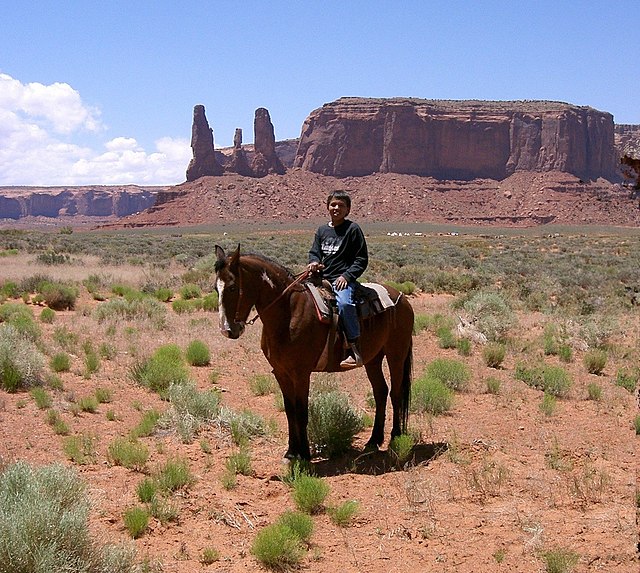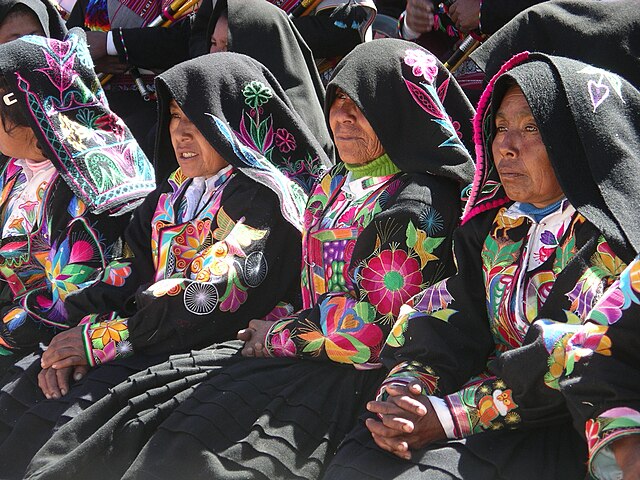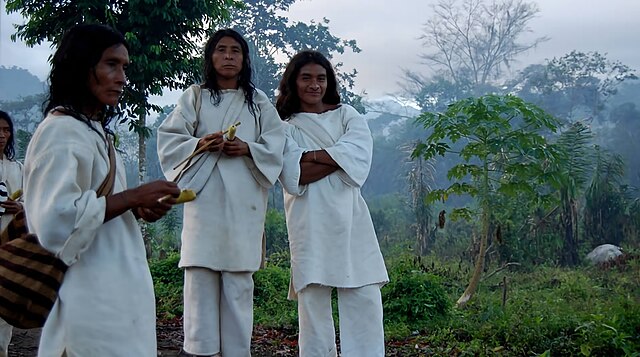Mestizo is a person of mixed European and Indigenous non-European ancestry in the former Spanish Empire. In certain regions such as Latin America, it may also refer to people who are culturally European even though their ancestors are Indigenous. The term was used as an ethno-racial exonym for mixed-race castas that evolved during the Spanish Empire. It was a formal label for individuals in official documents, such as censuses, parish registers, Inquisition trials, and others. Priests and royal officials might have classified persons as mestizos, but individuals also used the term in self-identification.
A casta painting of a Spanish man and an Indigenous woman with a Mestizo child
A casta painting by Miguel Cabrera. Here he shows a Spanish (español) father, Mestiza (mixed Spanish–American Indian) mother, and their Castiza daughter.
Luis de Mena, Virgin of Guadalupe and castas, 1750. The top left grouping is of an indio and an española, with their Mestizo son. This is the only known casta painting with an indio man and española woman.
Casta painting showing 16 hierarchically arranged, mixed-race groupings. The top left grouping uses cholo as a synonym for mestizo. Ignacio Maria Barreda, 1777. Real Academia Española de la Lengua, Madrid.
Indigenous peoples of the Americas
The Indigenous peoples of the Americas are groups of people native to a specific region that inhabited the Americas before the arrival of European settlers in the 15th century and the ethnic groups who continue to identify themselves with those peoples.
A Navajo boy in the desert in present-day Monument Valley in Arizona with the "Three Sisters" rock formation in the background in 2007
Wayuu women in the Guajira Peninsula, which comprises parts of Colombia and Venezuela
Quechua women in festive dress on Taquile Island on Lake Titicaca, west of Peru
The Kogi, descendants of the Tairona, are a culturally intact, largely pre-Columbian era society.








